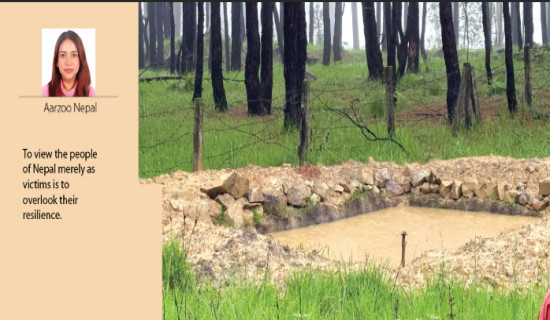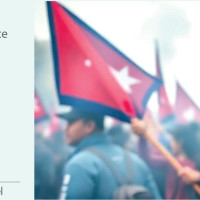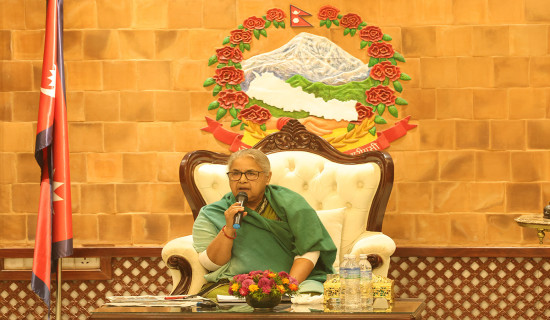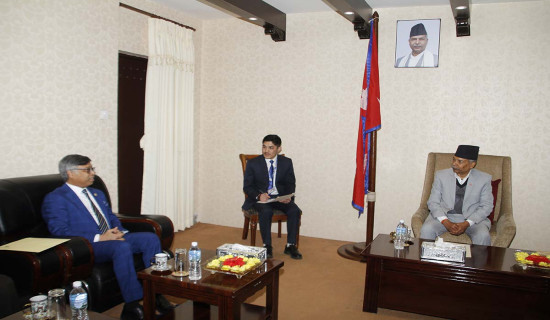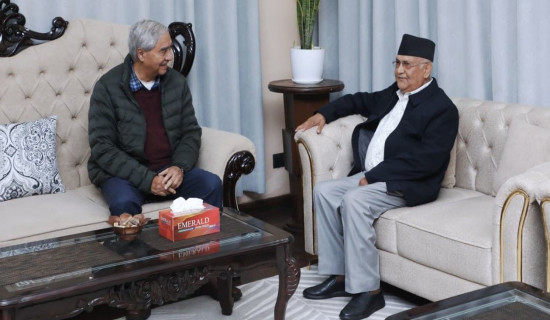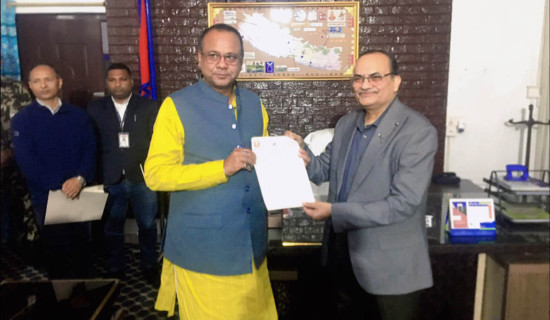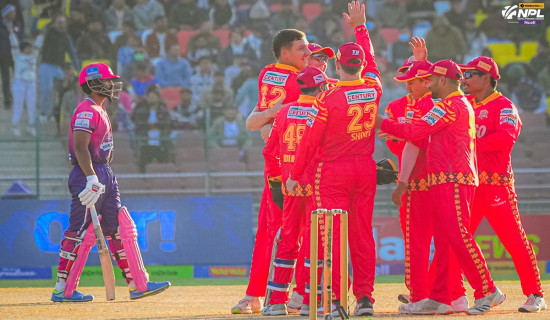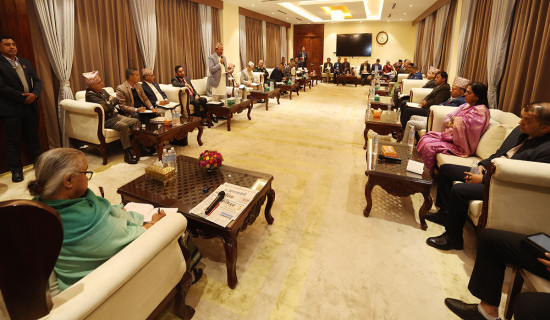- Saturday, 6 December 2025
BP Koirala: Dual Legacy
BP Koirala, a prominent figure in Nepal's history, is remembered under multiple titles. He dwelled within two versatile realms,each an unparalleled and independent avatar: one in politics and the other in literature. He came from a family that was against the Rana regime's rule for over a century. As a statesman, politician, and Nepal’s first elected prime minister, his name stands in opposition to the Ranas. However, politics is one aspect of his personality that contributes to an overview of his literary works. He was also a prolific writer, with several novels and short stories. They reflect his distinctive perspective and insight on Nepali society and culture. If one section of people knows him as a statesman and politician, the other knows him as unique in the genre of Nepali literature. In truth, his novels and short stories reveal him as a genius and a shining star in the Nepali skies. To understand him better, however, this discussion is incomplete unless one goes back to his early physical and rural settings.
It’s not easy to say whether BP’s first love was politics or literature. But when we examine his protean style, we can see how much his surroundings influenced him. His initial inspiration might have stemmed from the rural layout of the north-south road passing by his house. The road led to the local governor’s office in Biratnagar in a mere ten-minute walk. It played a big role in shaping his politics and literature.
To the east of his house and the road stood Morang Hospital, known by a different name today. In the hospital's front yard was a well-known 'daudaha ko inar.' This well was built with the support of a government official known as ‘daudaha (runner), who held a position similar to that of a local governor in the Rana era. It was a gathering spot for villagers in the area. Women from BP’s family, along with the local community, would come here with pitchers and buckets to draw water. To the north of Shahid Maidan (the martyrs’ memorial playground), near the governor’s office, there was another well. However, it couldn't withstand a makeshift war tank test. The tank, used in the fight against the Ranas, broke the well's rim, leaving no traces of it. However, the hospital well continued to provide water to nearby villagers for many years. It stood round the clock in life with people drawing water. Interestingly, the more water drawn from the well, the better it tasted, especially on scorching summer days. Overall, these physical settings served as sources of inspiration for BP’s literary sketches. They explored both common people and scenes, as well as the theme of Rana rebels, to make it more coherent and easier to understand.
Another source of inspiration for him was the perennial drain, Ghogha Paini, that ran along his western yards. It was home to various kinds of small river fish that lured boys with fishing hooks and baits in the winter. The drain was surrounded by nettle bushes, trees, birds, frogs, snakes, grasshoppers, jackals, and other small creatures. The scenery was panoramic and captivating. Tarini, one of BP’s brothers, also drew a lot of inspiration from this environment. He wrote a famous novel, Sarpadansha, that depicted scenes of a woman urinating with fizzy sounds, a snake hiding in a fish hole, and a snakebite incident based on this setting. Sarpadansha is a prominent Freudian novel. For the creative mind of BP, the drain environment was even more inspiring. Other primitive features stimulated his literary spirit. He had experienced such natural views in his early life and education when he lived for years in Tedhi, Patna (Bihar), Banaras, etc.
Nature Lover
BP is known as Pundit Bishweshar Prasad Koirala in literature. Pundit is an attribute given in his short story ‘Shatru’ (Foe) in the intermediate-level prose selections of the Tribhuvan University textbook of the 1960s. This story has a simple socio-psychological setting, which is one of his best. During the COVID lockdown days, I read his novel, 'Hitler and Yahudi'. The story does not revolve around rural settings, but it starts with them. In the novel, readers can see traces of Freudian themes. It tells the story of a protagonist who suffers from a terminal illness and travels to Europe via Bombay by ship for treatment. His wife had financed the trip with her hard-earned money. However, he often forgets her and indulges in fantasies of wild sex. The novel gives detailed descriptions of different women and their beauty. The protagonist can't help but admire their sex appeal and expresses it in a letter to his wife. BP seems to have violated his moral boundaries here. The letter is a vivid sketch of sexuality, similar to a film magazine’s cover page featuring a beauty queen. The protagonist wrote it with frankness and boldness to his wife when Nepali society could not tolerate such behavior. It’s not natural to appreciate the beauty of strange women before a wife!
However, the focus here is on the background that influenced his literary writing throughout his life. The rural setting is depicted in his collection of short stories, "Shweta Bhairavi," which reflects his past. The stories are dominated by human psychology and sexuality. The title story, "Shweta Bhairavi," depicts the drain as an offshoot of the Koshi River with a naive village girl as the main character. BP’s ability to begin with such a setting and then shift to a global context is remarkable, as demonstrated in the story 'Hitler and Yahudi.'
Multiple Genres
His books are rich in rural settings and the essence of nature. More importantly, they also explore complex themes of psychology and sexuality. As a politician, he often wrote about politics as an instrument of satire against the rulers of his time. He was also a voracious reader. His jail term in Sundarijal lasted for many years, during which he read and wrote extensively. He would secretly buy books and offer tips to those who visited him with food packets. On the brighter side, he is a literary figure akin to renowned English poets such as Wordsworth and Shelley. BP's portrayal of rural settings resembles that of Wordsworth, who was born in the naturally beautiful Lake District. Wordsworth’s poetry is woven with themes of rivers, hills, lakes, clouds, and rainbows. BP’s prose is equally detailed and vivid in describing nature. He is also like Shelley in his vision of world order and utopia, pleading for radical change through the popular doctrine of democratic socialism.
However, BP’s qualities don’t end there. His writing prominently features the stream of consciousness, a genre famously explored by Virginia Woolf. The stream of consciousness can be observed in many of his works not mentioned above. BP appears to blend these influences while introducing Freudian themes as a new topic in Nepali society. As a result, readers are absorbed and captivated by the heart-touching details and are buried in undivided attention. Interestingly, BP adds one important point in his autobiography: he could have been an advocate practicing law if he had not entered politics. He has become a controversial figure today due to his statement that he was not against the king. Words cannot fully capture the profound impact he left on politics and literature.
(Baral is a retired lecturer of English.)



